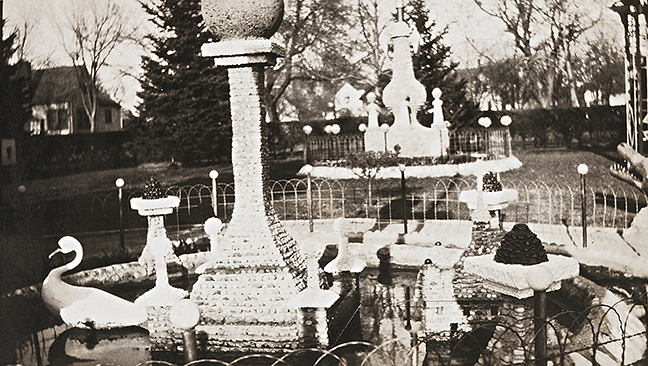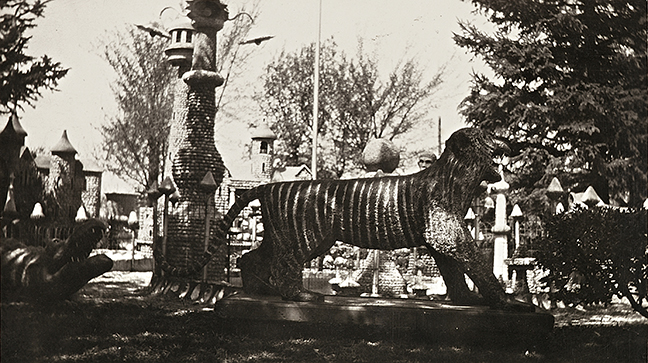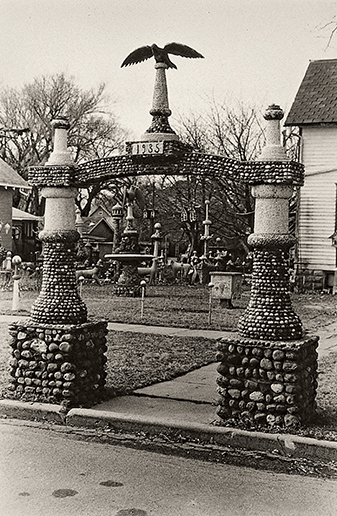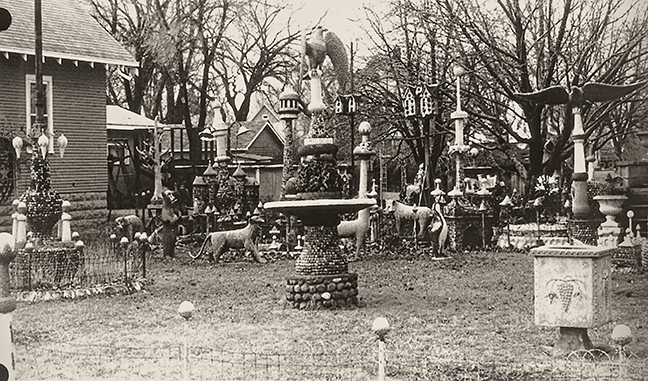Carl Peterson Site, St. James, MN




The Site
During the first half of the twentieth century, Swedish immigrant Carl Peterson filled his St. James, Minnesota, garden with ponds, fountains, animal figures, architectural elements, and dozens of miniature buildings. Relying on his skills as a blacksmith, cabinetmaker, and railroad worker, he created a fairy-tale village primarily from scrap metal and pipes covered in concrete and embellished with stones. Many were topped with egg-shaped finials.
Likely inspired by his research into formal English gardens, Swedish architecture, and a local ice sculpture carving competition, Peterson’s fantasy environment was meant as a place of relaxation and contemplation for his seven children.
His son, Filbert, lived in the home until 1985, at which point a Minnesota art and antiques dealer purchased the work and dismantled the site.
In 2007, the John Michael Kohler Arts Center was gifted some of Peterson’s sculptures from the Kohler Foundation, Inc. Today, fifteen large pieces are installed in the Arts Center gardens, and ten are on view at the Art Preserve.
Carl Peterson
1869–1969

Carl Peterson was born in 1869 in the hamlet of Slomarp, near Mjölby, Östergötland, Sweden. He was given the birth name of Carl Emil Andersson and was the first of Anders Peter and Augusta (nee Berggren) Carlsson’s seven children. Growing up with an enthusiasm for design, Peterson gained experience as a blacksmith, cabinetmaker, and sculptor. At nineteen, his parents put him on the steamship Romeo bound for Hull, England, hoping that he would find a better life. From Hull, he sailed to the United States, joining his uncle Johan Rask, a farmer living near Darfur, Minnesota.
In the early 1920s, Carl Peterson settled in St. James, Minnesota. For over forty years, Peterson transformed his yard into a formal garden full of miniature buildings.
After his son’s death in 1985, the site was dismantled and over fifty components were donated to the John Michael Kohler Arts Center.




